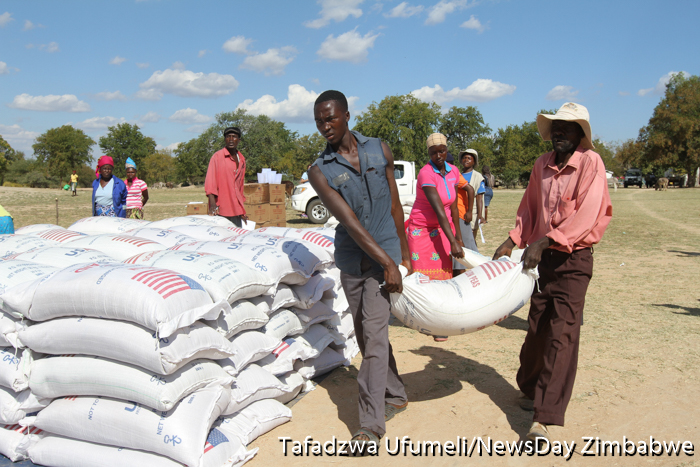
By NQOBANI NDLOVU
ZIMBABWE has recorded an increase in the number of households receiving food aid among other forms of support from non-governmental organisations (NGOs) as hunger and the harsh economic climate takes a toll on many, especially those in the rural areas.
This is contained in a latest Zimbabwe Vulnerability Assessment (ZimVAC) 2020 rural assessment report which shows that the number of households receiving UN/NGO support increased from 13% registered in 2019 to the current 33%.
ZimVAC is a technical advisory committee composed of representatives of government, development partners, the United Nations, non-governmental organisations, technical agencies and the academia.
“Nationally, 55% of the surveyed households received government support, followed by UN/NGOs (33%), urban relatives (16%), rural relatives (13%) and diaspora relatives (11%),” the report read in part.
“There was an increase in the proportion of households that received support from UN/NGOs from 13% in 2019 to 33% in 2020. However, the proportion of households that received support from rural and urban households slightly increased.
“Of those households which received food support, 92% received it from UN/NGOs and 90% from their relatives in the rural areas. Urban relatives were the major sources of cash.”
ZimVAC researchers used household food insecurity prevalence as the key indicator to determine the sample to ensure 95% confidence level of statistical representativeness at district, provincial and national levels.
- Chamisa under fire over US$120K donation
- Mavhunga puts DeMbare into Chibuku quarterfinals
- Pension funds bet on Cabora Bassa oilfields
- Councils defy govt fire tender directive
Keep Reading
“At national level, there was a slight increase in the proportion of households that received support in 2020 (76%) as compared to 2019 (73%). Manicaland experienced a sharp increase from 60% in 2019 to 71% in 2020.
“There was a decrease in the proportion of households that received support in Mashonaland Central (76% to 74%) and Mashonaland West (71% to 61%),” the report added.
The ZimVac is chaired by the Food and Nutrition Council, a department in the Office of the President and Cabinet whose mandate is to “promote a multi-sectoral response to food and nutrition problems” such as hunger and malnutrition.
According to humanitarian aid agencies, millions of Zimbabweans are food insecure owing to climate change-induced drought.











